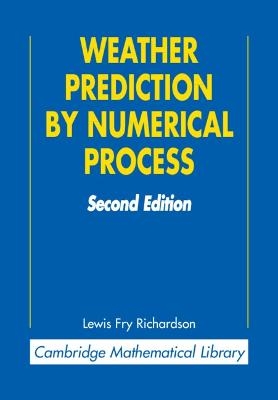
Weather Prediction by Numerical Process
Seiten
2007
|
2nd Revised edition
Cambridge University Press (Verlag)
978-0-521-68044-8 (ISBN)
Cambridge University Press (Verlag)
978-0-521-68044-8 (ISBN)
Forecasting the weather by calculation was first dreamt of by Lewis Fry Richardson. He was ahead of his time and modern weather prediction and climate modelling are witness to the influence of his ideas. This edition contains a foreword by Peter Lynch, setting the original book in context.
The idea of forecasting the weather by calculation was first dreamt of by Lewis Fry Richardson. He set out in this book a detailed algorithm for systematic numerical weather prediction. The method of computing atmospheric changes, which he mapped out in great detail in this book, is essentially the method used today. He was greatly ahead of his time because, before his ideas could bear fruit, advances in four critical areas were needed: better understanding of the dynamics of the atmosphere; stable computational algorithms to integrate the equations; regular observations of the free atmosphere; and powerful automatic computer equipment. Over the ensuing years, progress in numerical weather prediction has been dramatic. Weather prediction and climate modelling have now reached a high level of sophistication, and are witness to the influence of Richardson's ideas. This new edition contains a new foreword by Peter Lynch that sets the original book in context.
The idea of forecasting the weather by calculation was first dreamt of by Lewis Fry Richardson. He set out in this book a detailed algorithm for systematic numerical weather prediction. The method of computing atmospheric changes, which he mapped out in great detail in this book, is essentially the method used today. He was greatly ahead of his time because, before his ideas could bear fruit, advances in four critical areas were needed: better understanding of the dynamics of the atmosphere; stable computational algorithms to integrate the equations; regular observations of the free atmosphere; and powerful automatic computer equipment. Over the ensuing years, progress in numerical weather prediction has been dramatic. Weather prediction and climate modelling have now reached a high level of sophistication, and are witness to the influence of Richardson's ideas. This new edition contains a new foreword by Peter Lynch that sets the original book in context.
Peter Lynch is Met Éireann Professor of Meteorology at University College Dublin and Director of the UCD Meteorology and Climate Centre.
Foreword; 1. Summary; 2. Introductory example; 3. The choice of cooordinate differences; 4. The fundamental equations; 5. Finding the vertical velocity; 6. Special treatment for the stratosphere; 7. The arrangement of points and instants; 8. Review of operations in sequence; 9. An example worked on computing forms; 10. Smoothing the initial data; 11. Some remaining problems; 12. Units and notation; Index of persons; Index of subsidiary subjects.
| Erscheint lt. Verlag | 13.8.2007 |
|---|---|
| Reihe/Serie | Cambridge Mathematical Library |
| Vorwort | Peter Lynch |
| Zusatzinfo | 58 Tables, unspecified; 4 Maps; 11 Line drawings, unspecified |
| Verlagsort | Cambridge |
| Sprache | englisch |
| Maße | 175 x 247 mm |
| Gewicht | 450 g |
| Themenwelt | Mathematik / Informatik ► Mathematik ► Analysis |
| Mathematik / Informatik ► Mathematik ► Angewandte Mathematik | |
| Naturwissenschaften ► Geowissenschaften ► Meteorologie / Klimatologie | |
| ISBN-10 | 0-521-68044-1 / 0521680441 |
| ISBN-13 | 978-0-521-68044-8 / 9780521680448 |
| Zustand | Neuware |
| Haben Sie eine Frage zum Produkt? |
Mehr entdecken
aus dem Bereich
aus dem Bereich
Buch | Softcover (2024)
De Gruyter Oldenbourg (Verlag)
59,95 €


